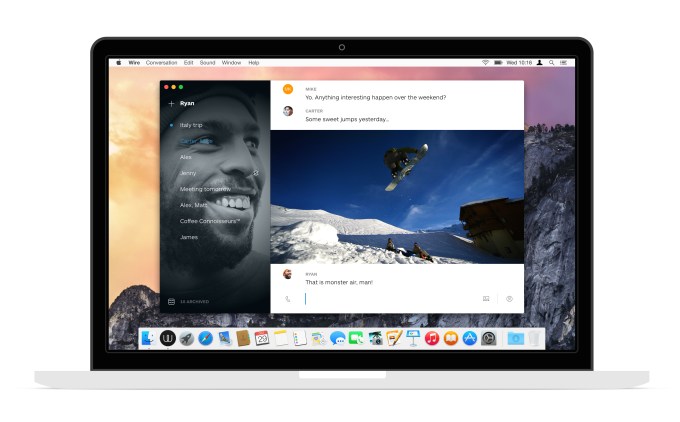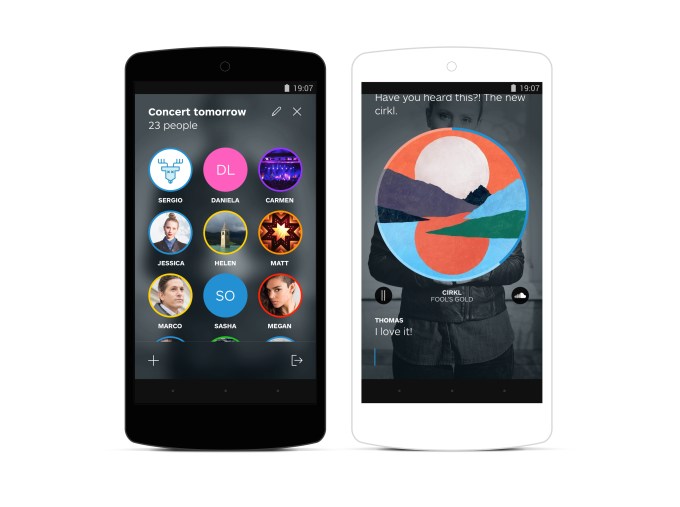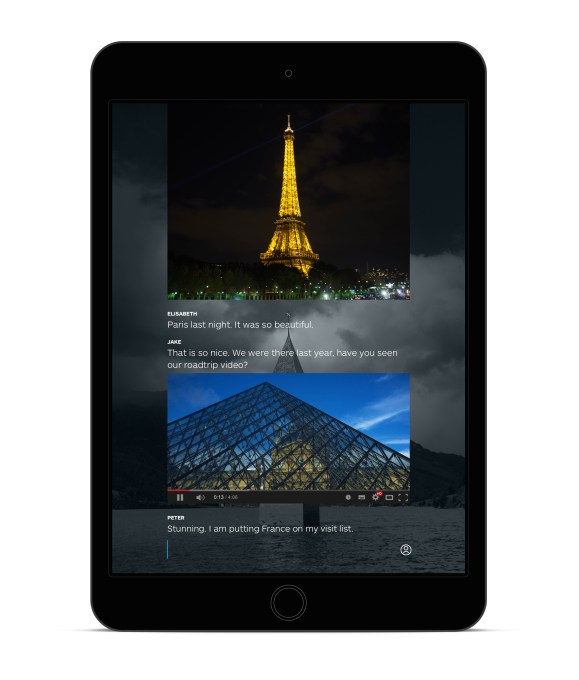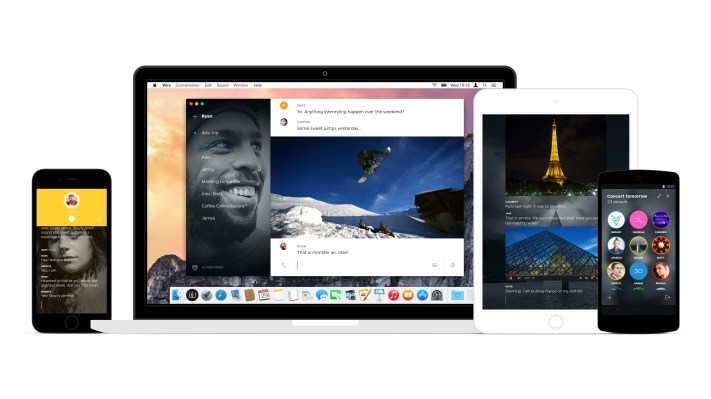Skype co-founder Janus Friis is backing a new communications app called Wire, out now for iOS, Android and Mac OS X. The app itself is the reimagining of how a communications tool like Skype should operate had it been built today. Much of that, in Wire’s case, means under-the-hood improvements that users don’t necessarily see, such as advancements in media processing, audio technology, file compression and delivery, and more.
Wire pairs this more solid infrastructure with an uncluttered, simple design that will likely be the initial attraction for mainstream users.
Skype, of course, is one of the top communication apps in the world, but it’s also running on dated technology. Users still experience issues with call quality, connection problems, synchronization and more.
“Skype was launched more than a decade ago. A lot has changed since then – we are all used to free calls and texting, and we have taken to carrying our computers in our pockets,” said Friis in a statement about Wire’s launch. “It is time to create the best possible communication tools, as beautiful as they are useful,” he says. “Wire is just that.”
Wire of course is not the first attempt at reimagining communications for the mobile age. Even Skype’s team inside Microsoft rebuilt its take on a modern Skype with a new app called Qik launched recently.

Based in Zug, Switzerland, Berlin and elsewhere, Wire has a strong team with deep backgrounds in communications, including those who worked in product and technology at Apple, Skype, Nokia and Microsoft. Co-founder and CEO Jonathan Christensen has been in Internet communications for 15 years, having previously worked on MSN Messenger and Lync at Microsoft, and then later co-founded audio-processing software company Camino Networks, which was later acquired by Skype.
Co-founder Alan Duric (CTO) also co-founded Camino, as well as Telio, a VoIP company similar to Vonage. Wire’s head of product design Priidu Zilmer previously led design teams at Vdio and Skype. And Wire’s Chief Scientist Koen Vos created the audio compression format SILK and co-created the audio coding format Opus.

Wire today is not a Skype replacement, however. Well, at least not yet.
The service, which works as both a mobile and desktop app, allows users to share text, pictures, GIFs, HD audio and other rich media, including content from SoundCloud and YouTube. But it currently lacks video support for either real-time video chat or asynchronous recordings, though it plans to add this and other features later on, including HTML5 web support (soon, also WebRTC compatible) and later premium features users may pay for.
What’s most impressive about the app for a non-technical user is Wire’s elegant design, which will appeal more to younger users who grew up with smartphones in their pockets. They’re likely used to gestures like swiping and pulling down on screens to access menus – movements that the mobile app utilizes for things like moving back and forth between chats at the contacts list, for example, or accessing a search box at the top of the screen.
Older users may initially struggle with the lack of obvious navigational aids, like “hamburger” menus (the mobile menus with three stacked lines) or buttons, but Wire gives little tips the first time you use it to help you get started.
The design is one where most of the app’s features and the chats’ metadata are hidden away from view. For instance, when you want to share a photo, call or “ping” another user, you have to swipe the flashing cursor to the right to reveal the options. If you want to see a message’s date and timestamp, you have to tap on it.
The end result is a messaging client where the focus is more on the content being shared, rather than the app itself which almost disappears into the background.
The app is smart in subtle ways, too. For instance, as you use the app to chat, it reorganizes your contact list putting those you’re most likely trying to reach up at the top.
 “When I left Skype in 2012, I really didn’t have this out of my system,” says Christensen of co-founding Wire. After getting Duric on board with the idea, he then got back in touch with Skype co-founder Friis, who was already sketching out ideas for something similar with Zilmer. “It was super obvious we were thinking the same thoughts, so we shook hands and decided let’s get going,” Christensen says.
“When I left Skype in 2012, I really didn’t have this out of my system,” says Christensen of co-founding Wire. After getting Duric on board with the idea, he then got back in touch with Skype co-founder Friis, who was already sketching out ideas for something similar with Zilmer. “It was super obvious we were thinking the same thoughts, so we shook hands and decided let’s get going,” Christensen says.
The company has an undisclosed amount of funding from Friis and Iconical.com, a collection of engineers, executives and designers which serves as a new, non-VC model for investments including Aether (Cone), Rdio, Vivino, Vicarious and others.
“We looked at every single aspect of the landscape,” Christensen adds. “We had the context and the history having been in this for quite a long time and having seen the pain points,” he says. “We took all of them apart, and rebuilt them the way they should be built…we hope.”
Wire is a free download here.
Update: Some have asked about Wire’s stance on user privacy and encryption. The company offers end-to-end encryption (SRTP) for calls, and TLS for messages and media from clients to servers. As for user privacy, Christensen says, “privacy was a primary concern for us – it’s one reason why the data storage is in Europe and we are located in [Switzerland].” Plus, he adds, “we also hire outside security experts to review architecture, code, policies, penetration testing, etc. We take it very seriously.”
Data is retained on company servers however, and is not immediately deleted when users de-activate their account. He says the analogy here is something like Gmail – messages are still in others’ “inboxes” so to speak. The company is still figuring out for how long those messages need to be archived on servers following an account de-activation. “It’s an area we are actively working on, along with other ‘features’ in this domain,” Christensen says.
